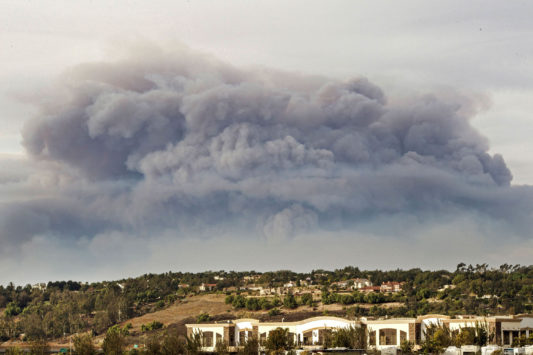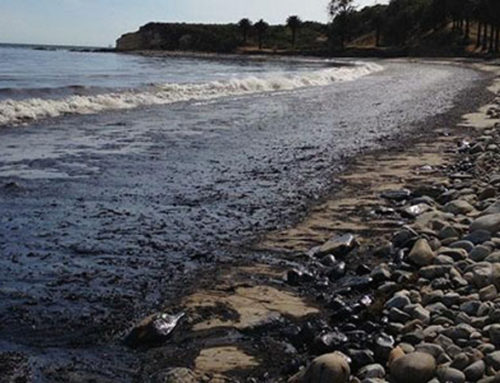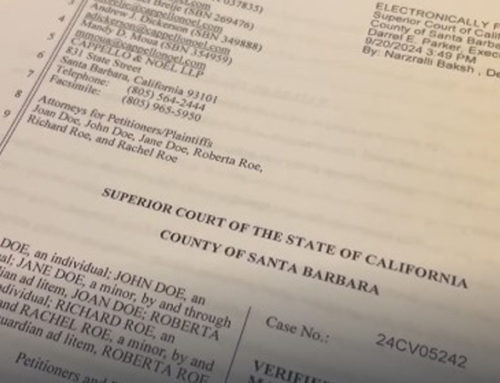Santa Barbara, Calif./Los Angeles, Calif. (Jan. 25, 2018)—A class action lawsuit was filed against Southern California Edison alleging the company knowingly and continually violated safety procedures, which lead to the devastating Thomas Fire and Montecito mudslides (Victoria Frost, Robert Blanchard, et. al vs. Southern California Edison, Edison International, Los Angeles Superior Court, January 24, 2018).
The named plaintiffs are individuals and small businesses who suffered property damage and lost income because of the Thomas Fire which began December 4, 2017 and led to the deadly mudslides in Montecito.
The carefully researched, detailed complaint describes the complete rendition of the events and the basis for the defendants’ liability. It references eyewitness accounts and other evidence showing that the fire’s underlying cause was “sparked by unsafe electrical infrastructure owned, operated and improperly maintained by Southern California Edison Company and Edison International (SCE).”
According to the complaint, SCE has a long history of failing to comply with Public Utilities Codes (PUC) requiring that public utilities maintain their equipment to ensure the safety of employees and the public. Since 2007, the California Public Utilities Commission (CPUC) has levied over $78 million in fines against SCE for electric and fire-related incidents.
“SCE violated its duty to its customers and the public by knowingly operating an aging, overloaded and improperly maintained infrastructure that couldn’t withstand the dry conditions and early December Santa Ana winds,” says A. Barry Cappello, managing partner of Santa Barbara’s Cappello & Noël LLP, one of the law firms filing the complaint.
“SCE has been fined numerous times for violations that resulted in fires and millions of dollars in property damage.”
The complaint highlights the National Weather Service-issued Red Flag Warnings of the impending Santa Anas prior to December 4. Nonetheless, despite the severe conditions that day, SCE crews undertook construction activities in the hills above the Ventura Ranch KOA Holiday Campground in Santa Paula, where the fire initially broke out, causing the fire. In addition, residents in Upper Ojai reported a power pole transformer exploding that day causing sparks to fall to the ground and catching the surrounding area on fire. The two fires eventually combined.
On December 11, 2017, SCE issued a press release, which stated that it was being investigated by Cal Fire for its role in starting the Thomas Fire and mudslides: “The causes of the wildfires are being investigated by Cal Fire …. SCE believes the investigations now include the possible role of its facilities.” Plaintiffs have not charged any governmental entity, but their investigation into other potentially culpable parties will continue.
After shrouding the Central Coast in thick smoke for weeks, the Thomas Fire burned homes in Montecito and threatened many others before it was pushed back. All the while, residents and small business owners suffered as businesses shut down throughout Ventura County and Santa Barbara County. Then, in early January, rains brought devastating mudslides to Montecito, which led to widespread tragedy, loss of life, personal injuries and extensive property damage.
“The CPUC requires that in extreme fire areas, SCE makes sure that its power lines can withstand winds up to 92 miles per hour,” says Leila J. Noel, partner at the firm.
As alleged in the complaint, “Clearly, while the December winds were severe, they were below this threshold. Another CPUC order is for SCE to inspect and repair its transformers and poles at least every five years. SCE has admitted it has not done so. Most of its electrical poles are over 70 years old. Many are overloaded with equipment making them even more unsafe. Another puzzling decision was that SCE has the ability to shut down its power grid during exceptionally strong wind situations but it chose not to do so on December 4.”
The plaintiffs in the proposed class action are individuals who lived, worked, leased or operated a business in Santa Barbara and Ventura counties and who suffered economic, real property, personal property damage or evacuation financial damage resulting from the fire and mudslides. The lawsuit seeks to recover compensatory as well as punitive and exemplary damages from SCE.
“SCE understood the risks and the ramifications of not maintaining its equipment,” says Noël. “Now they must be held accountable.”
Cappello & Noel joins renowned class action firms Lieff Cabraser Heimann & Bernstein, LLP, and Keller Rohrback LLP. The collective group has decades of significant experience in class action work and have recovered billions of dollars for their clients.






